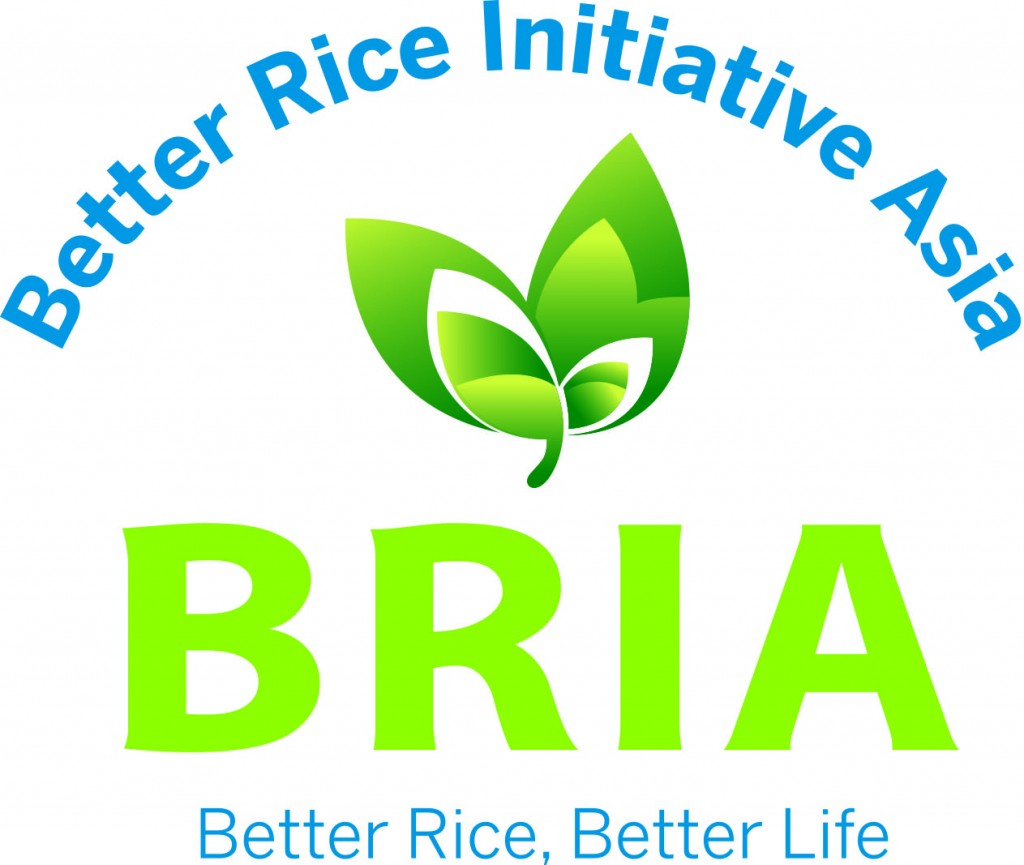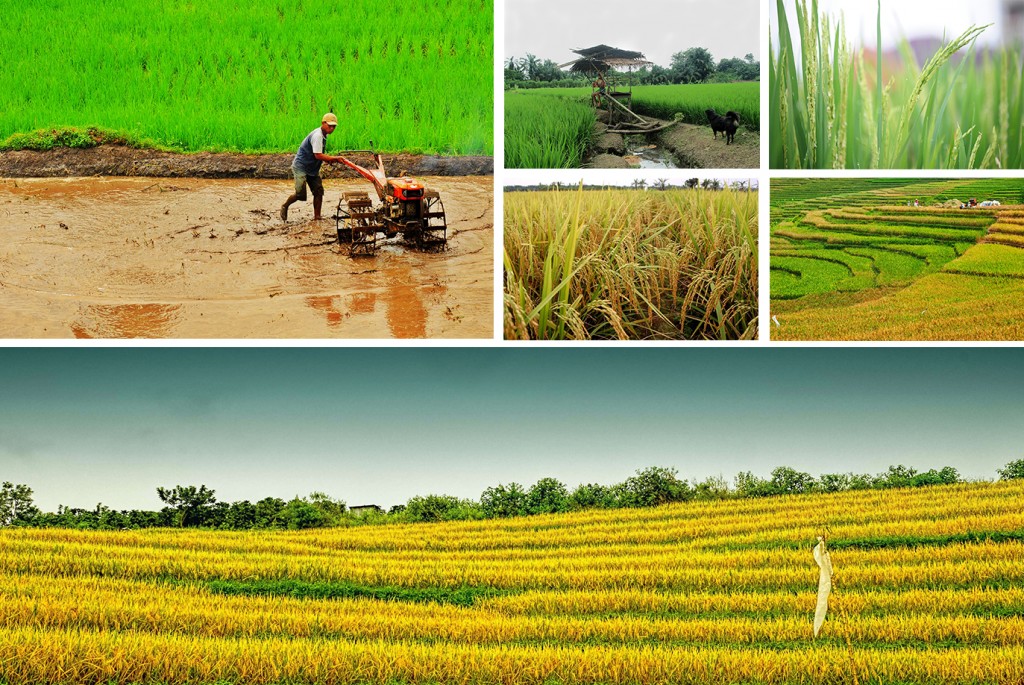Improving farmers’ livelihoods by enhancing productivity and market linkages in Iloilo Province
In close cooperation with the Department of Agriculture (DA), its Regional Field Offices (RFOs), the Agricultural Training Institute (ATI), the Philippine Rice Research Institute (PhilRICE) along with private sector partners Bayer and Yara, Better Rice Initiative Asia or BRIA seeks to promote market-oriented rice production, entrepreneurship and market linkages. The project will explore options for direct marketing channels for rice and enable smallholder farmers through better and more efficient organization of the production and marketing processes to realize efficiency gains.
 In this regard, BRIA aims to develop and test a scalable model, which is economically sustainable and which creates benefits for the market actors involved (farmers, traders, millers), through the tapping of new markets and the lowering of production costs.
In this regard, BRIA aims to develop and test a scalable model, which is economically sustainable and which creates benefits for the market actors involved (farmers, traders, millers), through the tapping of new markets and the lowering of production costs.
To contribute to this aim, BRIA will support the establishment of more efficient market linkages, which can serve as a model for replication in other regions. BRIA, through the study of the Center for Rural Development (SLE) of the Humboldt University of Berlin, conducted a research study on “Improving Market Access for Smallholder Rice Producers in the Philippines.” The results of this study have been taken into account for the implementation of this model.
In this model, BRIA will explore the challenge of improving rice productivity while at the same time addressing market access and linkages with specific focus on farmer organizations for the value chain coordination. Through organized actions of smallholder farmers it is expected that the target group as well as participating millers and/or traders will significantly benefit from the proposed development interventions.
Objectives
The primary objective is to develop and test a market-linkage model that will address the twin challenges of enhancing rice productivity and market linkages of smallholder rice farmers, based on a realistic and sustainable business case, to improve their livelihoods. Specifically, BRIA aims to:
a. Improve farm productivity by using yield-enhancing and cost-reducing rice farming technologies
b. Assess the market needs of chain actors in the value chain
c. Enhance the business capacity of farmers
d. Enhance market access and develop market linkages
e. Help increase farmer’s income by creating links with value chain actors
BRIA realizes the significance of conducting development interventions with farmer organizations taking the lead and getting significant benefits out of the rice value chain. To achieve the set objectives, the following methodologies will be undertaken:
- Building a network of Rice Value Chain (RVC) stakeholders
No single institution can provide all the required assistance of farmers so that it is very important to build a network of RVC stakeholders who are willing to provide the base of support in assisting the farmer group. The partner institutions may include the following: Local Government Unit (LGU), Barangay Development Council, bank or micro-financing institution, non-government organizations, the academe, local farmer groups, and private sector actors, such as BRIA private partners or other private stakeholders. National government agencies such as PhilRice and the Department of Agriculture or GIZ can serve as intermediary in the development process [1].
- Selection of farmer organization
A community with an existing farmer organization which has low rice productivity and limited market linkages will be selected for the project. Through secondary data gathering and key informant interviews, the interest and commitment towards achieving organizational goals by the farmer group will be assessed. The social network and sphere of influence of the organization, among other factors, will also be looked into.
- Capacity Enhancement
The Farmer Field School approach will be used in enhancing the capacity of the farmer organization selected. It will focus on two main aspects: a) use of integrated crop management techniques to improve farm productivity; and b) enterprise development and management to improve market access and linkages, based on a calculated business case. The members of the partner farmer organization will be encouraged to adopt the best management practices and technologies observed in the learning field in order to raise the level and quality of production in order to meet market demand.
- Coaching and mentoring sessions
Coaching and mentoring sessions will be designed to enhance a sense of self-confidence among the farmers. This will be conducted using informal discussions and advisory sessions on specific technology and business issues to further encourage and promote the organization’s critical consciousness and value judgment, thereby hastening the learning process.
40% of 8,000 advised farmers have confirmed an enhanced knowledge on the local rice market and its marketing channels. Long-term agreements between advised farmers and retailers increased by 20% by considering risk management options and micro insurance.
- Demonstration Farm
A demonstration cum seed production farm measuring about 1.0 ha will be used to demonstrate varieties of good grain quality and high market acceptability. The same varieties should be planted by the participating farmer-members because these were earlier identified to be of high market demand and recommended by partner-trader/miller. In other words, the contract farming scheme will be carried out wherein the trader/miller specifies the quantity, quality, and price required, with the farmers agreeing to deliver at a future date. For demonstration farm selection, the site must be irrigated and accessible so that more people, especially farmers, will know about the project. The demo farm also serves as the learning field for the Farmer Field School while rice varieties and certified seeds preferred by both the farmers and miller will be identified [2].
- Market Needs Assessment and Analysis
A market needs assessment and analysis will be conducted to map the market and delineate the value chain, based on the results and experiences of the SLE-study. Through this activity, the chain actors who are actually involved in a particular product transaction as it moves through the chain can be identified. Moreover, a needs assessment survey will be conducted to identify the following: a) market or customer needs; b) product or rice quality which is in demand by specific buyers and traders; and c) farmers who are interested in supplying the market needs, taking into account the business case for the involved value chain actors.
- Monitoring and Evaluation
Farm visits and informal discussions will be done to monitor the situation in the target site. All pertinent data and observation will be gathered and recorded in prescribed monitoring forms. A year-end review and re-planning will be conducted to assess the effectiveness of the development strategies used and formulate measures to improve the implementation. The lessons learnt from the activity shall be shared with the other BRIA Project countries in Thailand, Vietnam and Indonesia [3].
a. Partnership with rice value chain stakeholders forged
b. Farm productivity and profitability of farmers improved
c. Market needs of chain actors determined
d. Business and technical capacity of the farmer organization enhanced
e. Market access and linkages strengthened: a model for profitable long-term arrangements for smallholder rice farmer is developed, tested and documented
f. Business-case developed and piloted
g. Farmers’ income improved
h. Sustainable Rice Platform (SRP) standard implementation with feasibility assessed and documented
[1] A series of consultation meetings will be organized in order to identify RVC stakeholders including potential partner-traders/millers who believe in the project objective and willing to support it. All agreements pertaining to project planning, implementation, monitoring and evaluation among stakeholders will be put into writing in the Memorandum of Agreement (MOA) on local level.
[2] The amount of seeds to be used by the farmers will depend on the potential market requirement which will be approved by the miller. PhilRice will source the seeds from accredited seed growers or other providers on the market. Payment will be collected at harvest time to be later turned to the organization as seed capital. The basis for the selection of varieties will be an economically viable business case, considering input costs and expected output. About two weeks before harvesting, a Field Day and Forum will be organized to showcase the project achievements in terms of enhancing productivity. The activity also aims to keep the partner-trader/miller posted about the project as well as strengthening linkage with them. The demonstration farm will pilot the implementation of the internationally developed SRP standard (of the Sustainable Rice Platform). The demonstration farm shall therefore serve as a trial to assess the feasibility of the implementation of the SRP standard, for the first time in the Philippines.
[3] To facilitate monitoring and evaluation of development interventions, GIS mapping will be done. Through mapping, change over time can be monitored and graphic presentation of conditions and relationships can be easily created.


